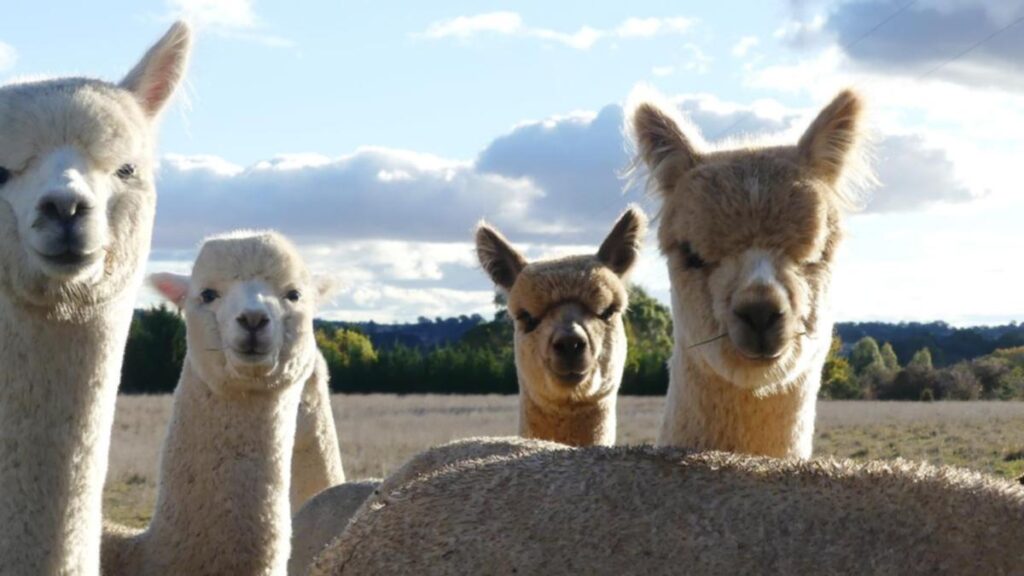Forget cake, Marie Antoinette is perfectly content grazing pasture.
She’s a queen among the herd of 150 alpacas at Forestglen Alpaca Stud on the picturesque plains of Millthorpe in central western NSW.
Nearby is Goodness Gracious, a newborn named for the surprising splashes of chocolate brown and white on her fleece.
Remy roams with Rock ‘n’ Roll, Momo and Antarctica, while Talk To Me has just given birth to a snowy white girl called Rumour Has It.
The curious creatures appear to kiss their young and affectionately nuzzle each other on their long necks while quietly feeding in the afternoon sun.
The stud, managed by Jennie Carey and her daughter Alexandra Staples, was established in the early 1990s, soon after Australia’s first flocks of alpacas were imported from South America.
Ms Carey’s mother Maureen began alpaca showing and breeding after spotting the exotic animals at a field day.
She was besotted with their “big beautiful eyes” and adorable babies, Ms Carey told AAP.
“It was love at first sight and the love affair has never really finished,” she said.
The Australian Alpaca Association, which represents more than 1000 breeders, is hoping the nation’s consumers will be wooed by the woolly animals too.
The industry is celebrating its 35th year with National Alpaca Week from May 10, complete with a campaign encouraging people to buy products made from the unique fleece.
The association’s president Brett Fallon, who operates a stud in Albany, WA, said alpaca fibre has many appealing qualities.
“It’s very warm … it has a silky feel to it and a natural lustre that is hard to replicate,” Mr Fallon said.
Australia’s alpaca industry was identified by research and development body AgriFutures as an emerging market in 2023.
With demand for quality and luxurious fibres here and overseas, the industry has enormous potential to grow, its report said.
The association is working to educate and support small-scale farmers to harvest fleece in a bid to bolster the market.
Some farmers may only keep a few alpacas – sometimes as pets or as guard animals for other stock – but there is still money to be made in the fibre.
“When it starts to scale up, that’s when you start to get better returns,” Mr Fallon said.
Bags of fleece line the shed walls at Forestglen, along with racks of show ribbons.
The stud’s fleece has won supreme champion at the Sydney Royal Easter Show eight times.
“Because it lacks the lanolin that sheep wool has, it has a magical feel,” Ms Carey said.
It’s not just the fleece that’s magic.
Alpacas are known to be easier on the land than cattle and sheep, allowing pastures to bounce back from grazing and drought.
And with their hooting call, they can expertly ward off foxes trying to prey on new lambs.
Forestglen has sold about 900 alpacas to farmers who use them as guardians.
Ms Carey trains the alpacas to respond to clapping, which also helps farmers herd sheep.
“They’re the leaders, they’re the bosses, they must be obeyed,” she said.
But ignore the stereotypes about spitting, cranky alpacas.
They are, after all, “great big puffballs”, Ms Carey said.
“I find them to be quite gentle.”



